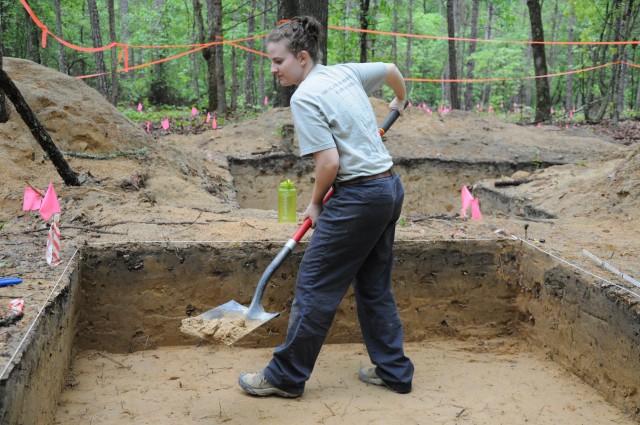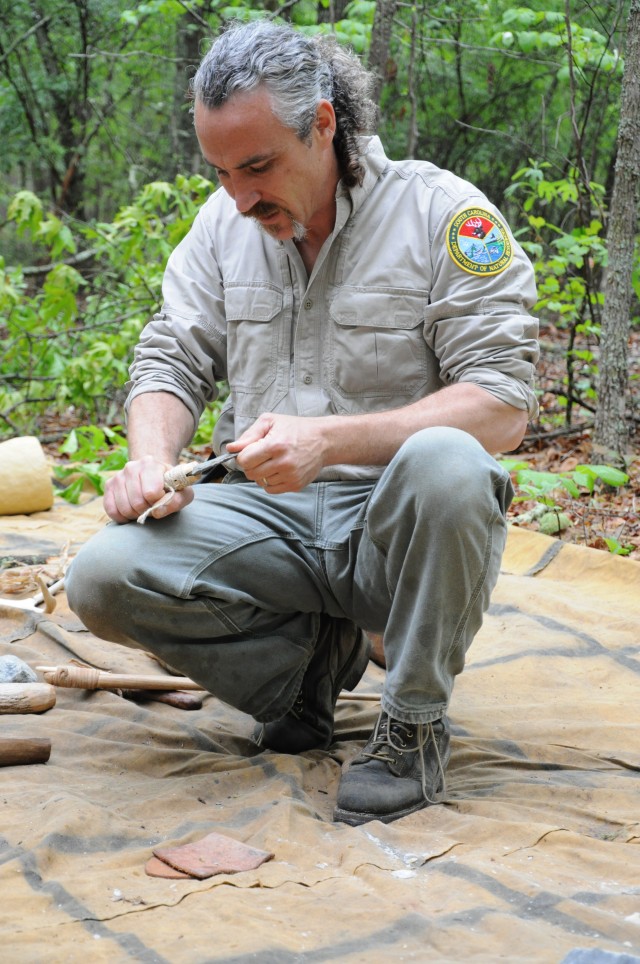FORT JACKSON, SC -- Long before Soldiers geared up for foot marches through the woods, travelers made stops on the land that now constitutes Fort Jackson. They left behind camp sites, which date back as many as 9,000 years to the Archaic period.
Archaeologists have surveyed sites on post for more than 20 years, and on Saturday the public was invited to visit one of the excavation areas.
David Youngblood made the roughly 75-mile trip from Fort Mill to learn about the site and the artifacts found here. Youngblood said he appreciates Fort Jackson allowing the public access to the site.
The site off Dixie Road encompasses approximately 18 acres and has yielded more than 10,000 bags of artifacts since archaeologists started an in-depth survey there in November, said Audrey Dawson, an archaeologist with the South Carolina Institute of Archaeology and Anthropology and the principal investigator for the site.
Dawson said that the area provided an ideal resting place for travelers.
"The site has four spring heads around it," she said. "The spring heads, during the middle archaic period, would have provided a constant supply of water. Plants would have grown around it and animals would have been attracted to it - making this a very attractive location to set up camp for the night as you're walking through the dry, hot Sandhills."
However, because of the sandy soil, many of the features that archaeologists typically look for during an excavation are absent.
"In fact, we're missing a large portion of the picture because all we get are stone tools and the occasional (pottery fragment) from later people who occupied the site," Dawson said. "We don't have any river cane. We don't have any of the wooden artifacts they would use. We don't have any of the bone or antler artifacts they would use, no feathers, no sinew, none of that."
Despite those shortcomings, the site promises to contribute to understanding life in the area during the Archaic period, said Chan Funk, archaeologist with the Fort Jackson Environmental Division.
"Right now, the significant aspects are the depth of the deposits, which extend down to about one meter, which is rare in the Sandhills and the tool types that we have here, (which) are much more ubiquitous than you find at other sites in the Sandhills," Funk said. "We've got things from all over the region right here over a 9,000 year period. It's a good opportunity to study the form and function of those sites over that time period."
Dawson, who plans to write her dissertation on the findings at the site, estimated that analyzing all the artifacts uncovered would take about five to six months of lab work.
Archaeologists have done intensive work at the site, partly because Fort Jackson mission requirements may bring construction to the area in coming years.
"The Environmental Division wanted to get (the site) mitigated before any money (for construction) became available, so we wouldn't be holding them up," Funk said.
The National Historic Preservation Act requires federal landholders to preserve archaeological sites whenever possible. Funk said that the cooperation between Fort Jackson and the archaeologists excavating on post has been exemplary.
"I've been singularly impressed since I got here with the dedication that the Army has to preservation of resources and its commitment to doing the right thing," he said.






Social Sharing